The Discovery Garden
“Te Kaapuia o Te Waoku – We are all part of nature. The Discovery Garden is an amazing living classroom where curious minds can explore and learn about the natural world. We’ll be focusing on the fantastic uses of plants – for food, fibre, medicine, and construction.” – Wellington City Council
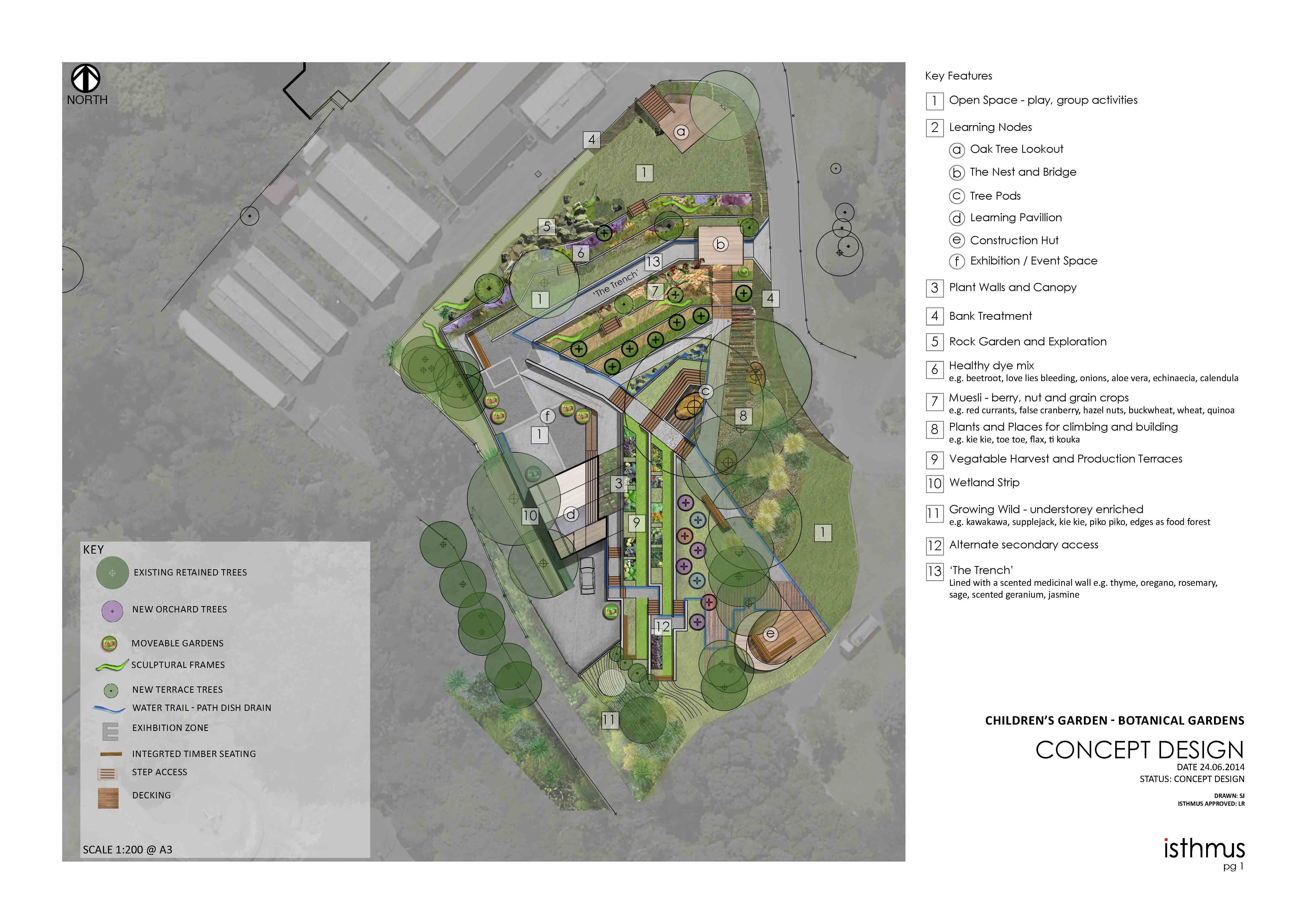
Landscape concept plan
Drawing: Isthmus
Located on a steep and exposed hillside between the existing Treehouse visitor centre and playground, the 1,500 m2 site is at the heart of the Wellington Botanic Garden. Wellington City Council engaged Isthmus to develop a children’s garden and focus on the many ways that plants sustain human life – by providing food, fibre, construction materials and medicine. The resulting Discovery Garden is a living classroom, shaped to a vision of bringing people and plants together.
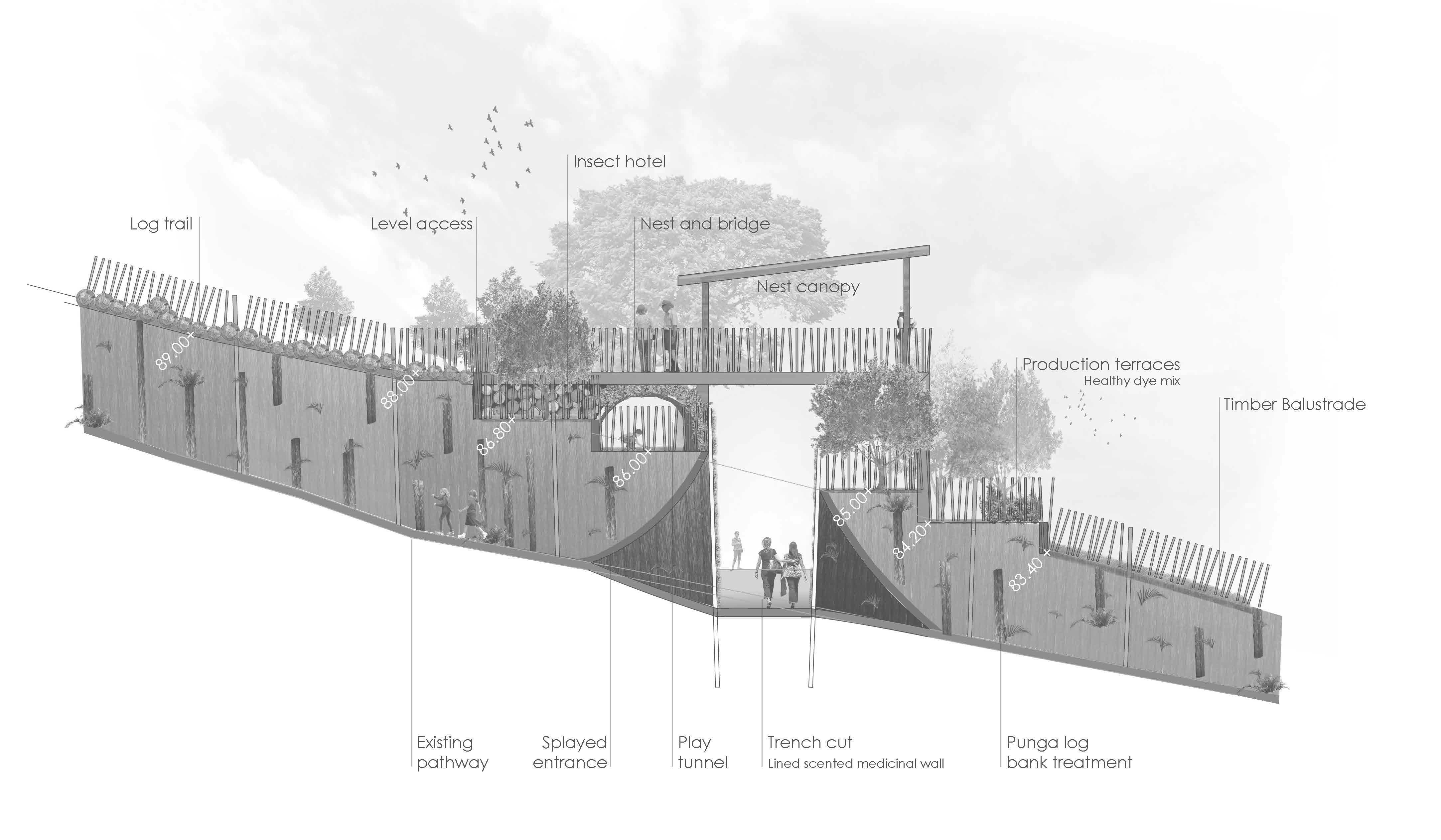
Concept section, Trench Entrace
Drawing: Isthmus
The big moves and challenge were to establish access through a central timber and ponga lined trench and a sequence of playful spaces with microclimates to grow plants. Learning nodes are set into this landscape such as the construction hut and oak tree deck for making, doing and experimenting. Water is threaded across terraces for ‘incredible edibles’ using the topography as a playful and purposeful element; with rainwater tanks and water flowing along interactive bamboo races then recycled safely for use by people and plants.
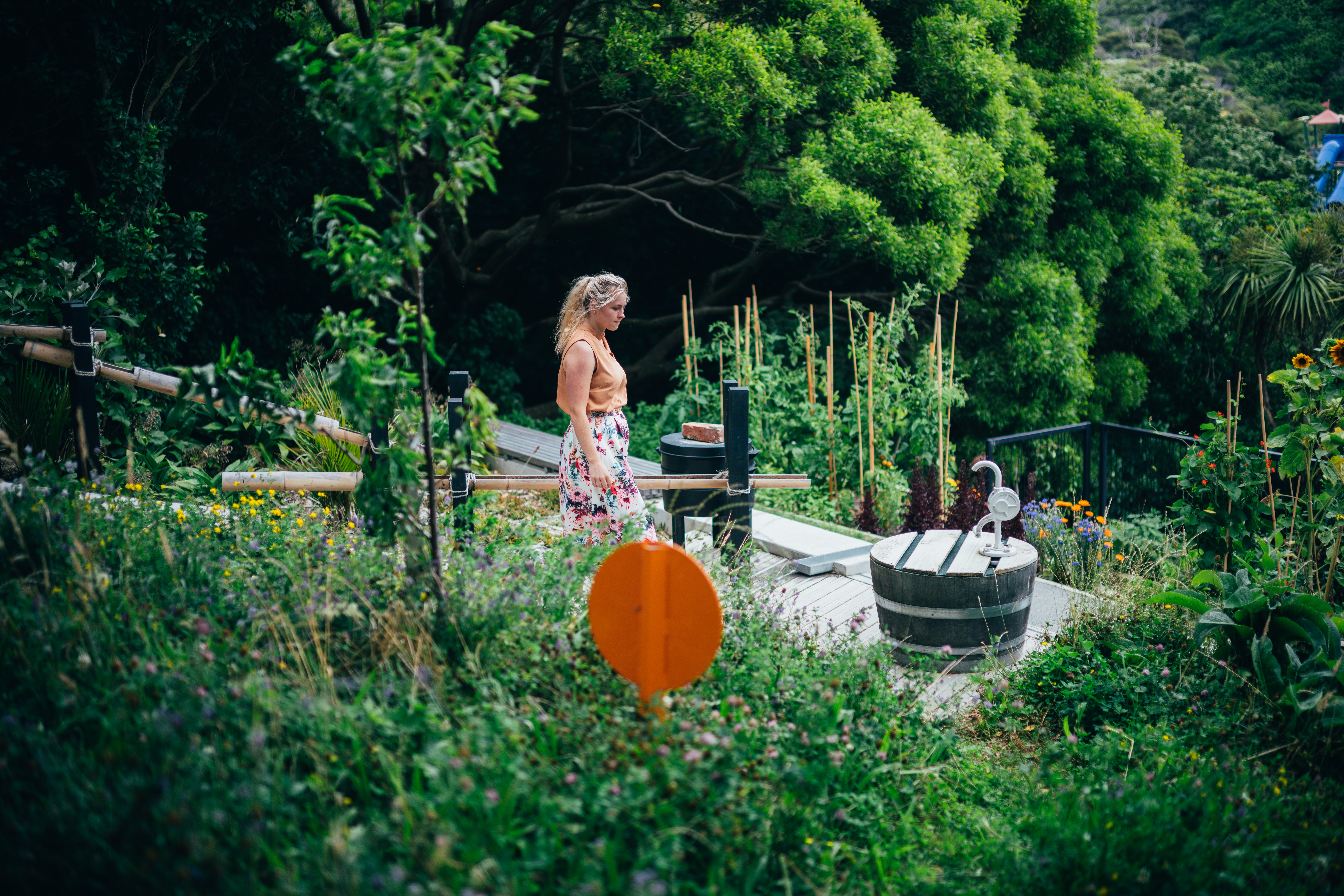
Waterplay Area
Photography: David St George
At the heart of the garden a new learning pavilion is nestled into the landform as the main gathering space for school workshops, events, tending the woolly pocket and moveable gardens and generally getting stuck in; as a sheltered space for making and doing, building connections through community to nature. Isthmus’ architects designed the building in collaboration with our landscape architects, working in the overlap to bring greater outcomes through integrated learning opportunities.
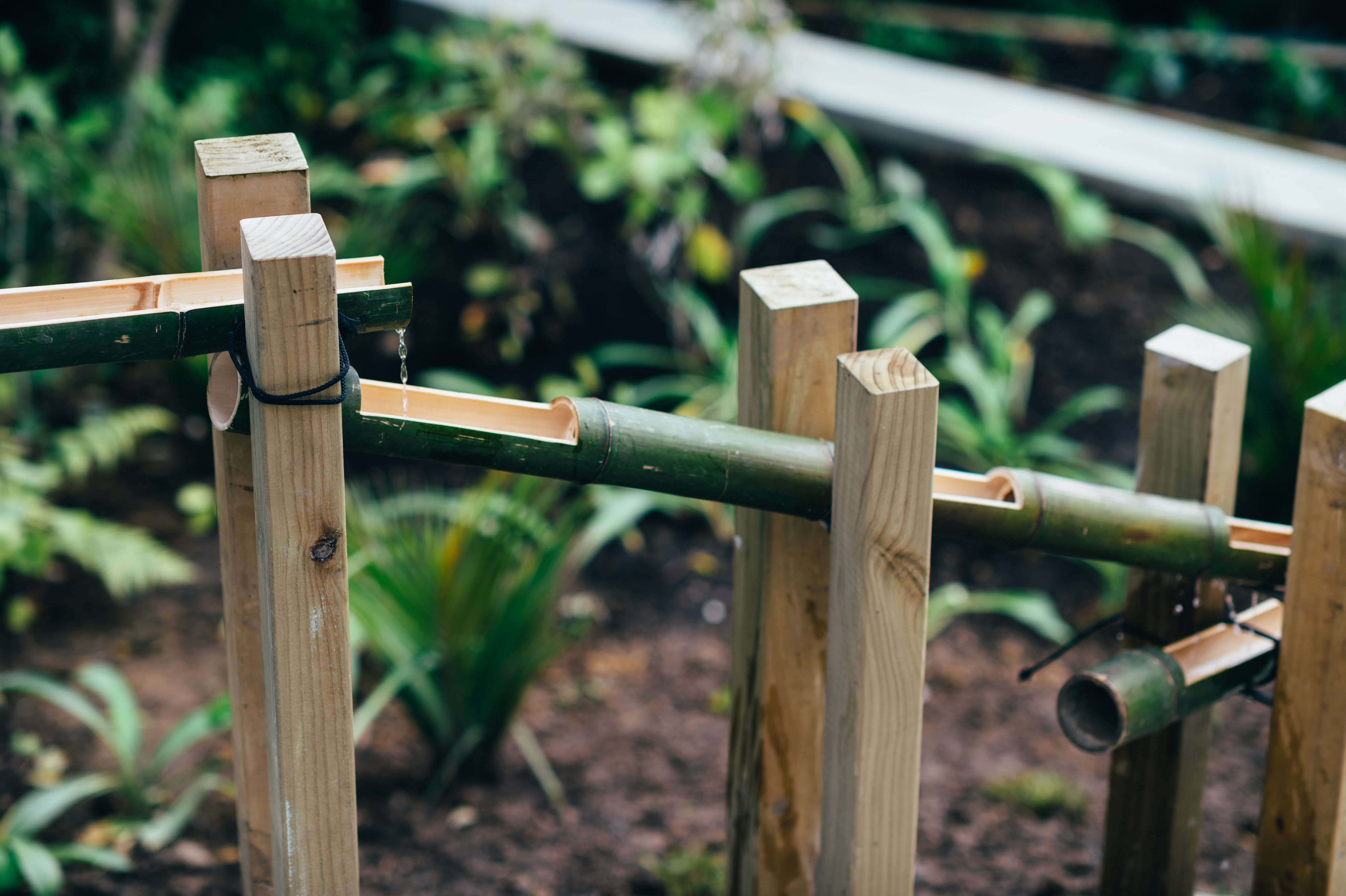
Bamboo water feature
Photography: David St George
Bringing this vision to life, required a strong working relationship with the Botanic Garden specialist staff and the Friends of the Garden. First, to confirm the range of species that would match the challenges posed by the site, a steeply sloped spur exposed to all winds, how the plants could be grouped in microclimate zones and where they could be sourced. Plants were brought in from as far south as Balclutha, tapping into small, and increasingly hard to find, specialist plant nurseries. Design to avoid damage to tree roots, was a further focus for the team, working closely with the arborist.

Concept Section, Learning Pavilion and Teraces
Drawing: Isthmus
In-depth research tapping into specialist knowledge of the site and its potential for diverse plant types, was required to create the raw materials that would be used to help tell the story and create new experiences of Plants for Life. With a focus on learning through enjoyment, the collection is playfully arranged to bring new meaning to the term ‘fast foods and incredible edibles’, ‘muesli mix’, ‘healthy dye’ and ‘growing wild’. Our first guides in the research process were mana whenua, linking us back to the history of the Garden as mahinga kai for Taranaki Whānui.
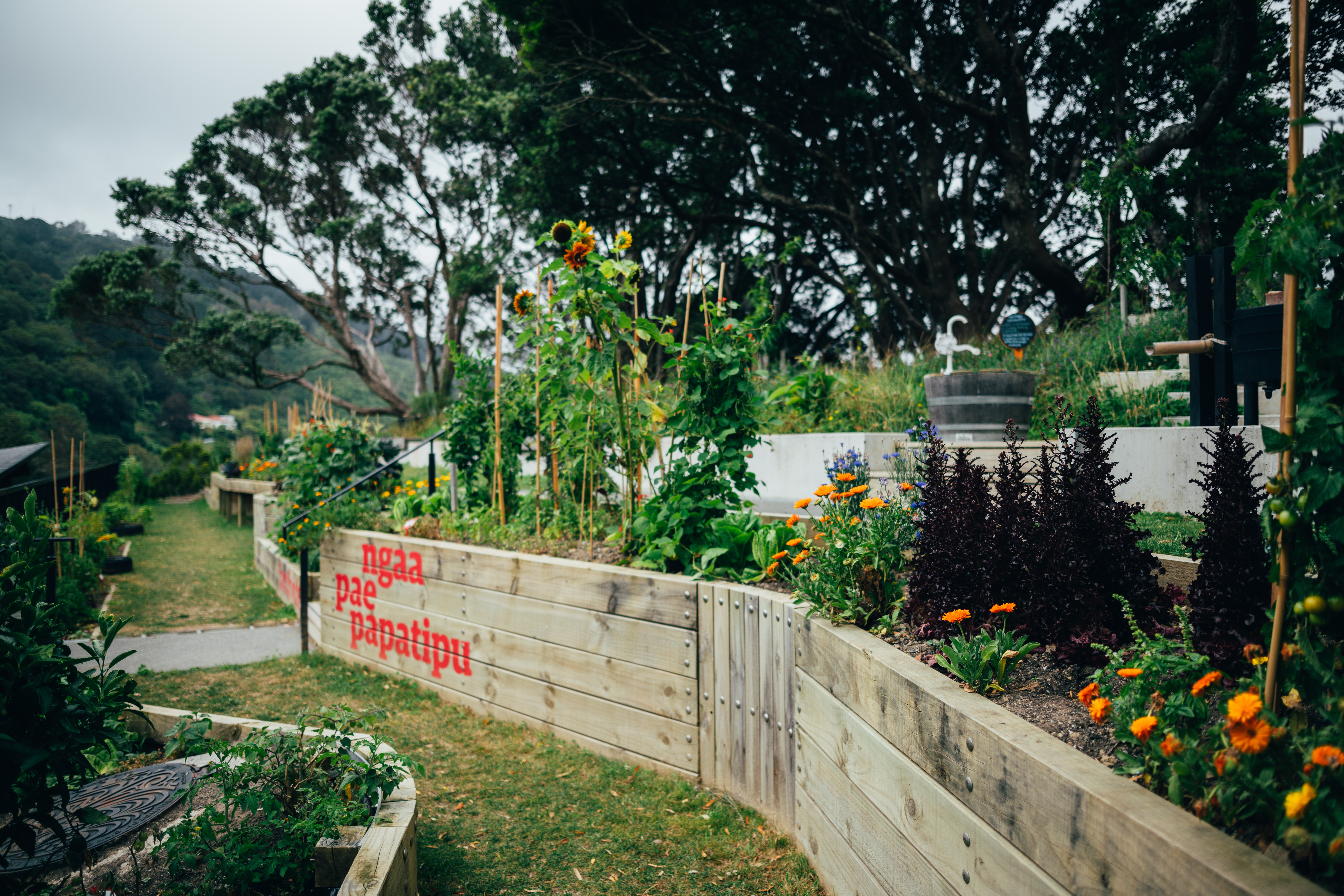
Vegetable harvest and production terraces
Photography: David St George
“Reconnecting people with nature through hands on experience in a children’s garden is part of a global conversation and reinterpretation of Botanic Gardens; to increase their relevance in our everyday and, increasingly, urban lives.”
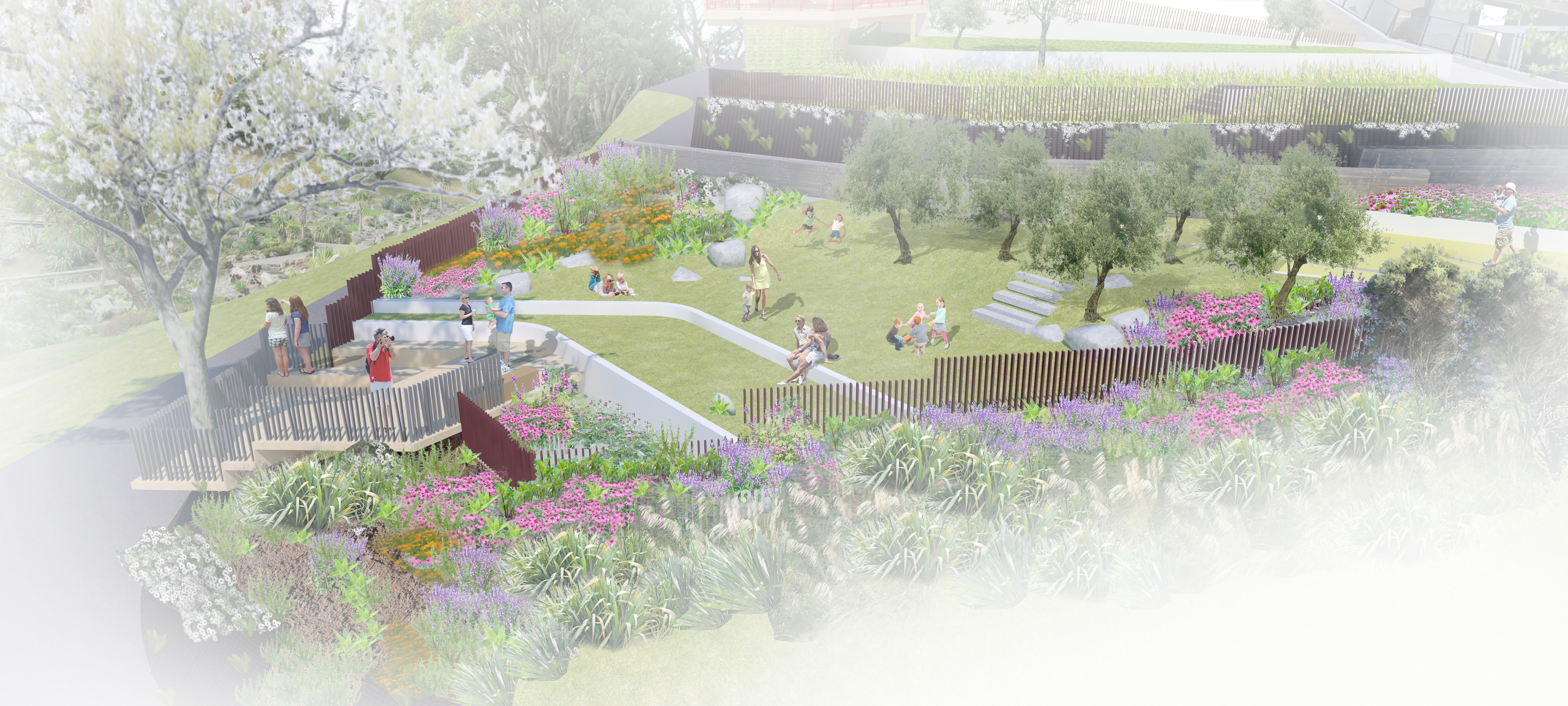
Oak Tree Lookout
Drawing: Isthmus
Wellington now has its own Discovery Garden, opened in September 2017, as a new destination for all visitors to enjoy and home to a busy education centre for children of all ages during term time and in holiday programmes. “There’s a long view here: we’re sowing the seeds for the future so, when these kids grow up, they’ll know what they can grow in the city. While the garden is brand new, it already looks well-established, with large trees scattered throughout, providing a framework around which everything else had been built and planted. We’re really happy for people to come in here and just enjoy the garden, have a picnic and wander around.” – WCC
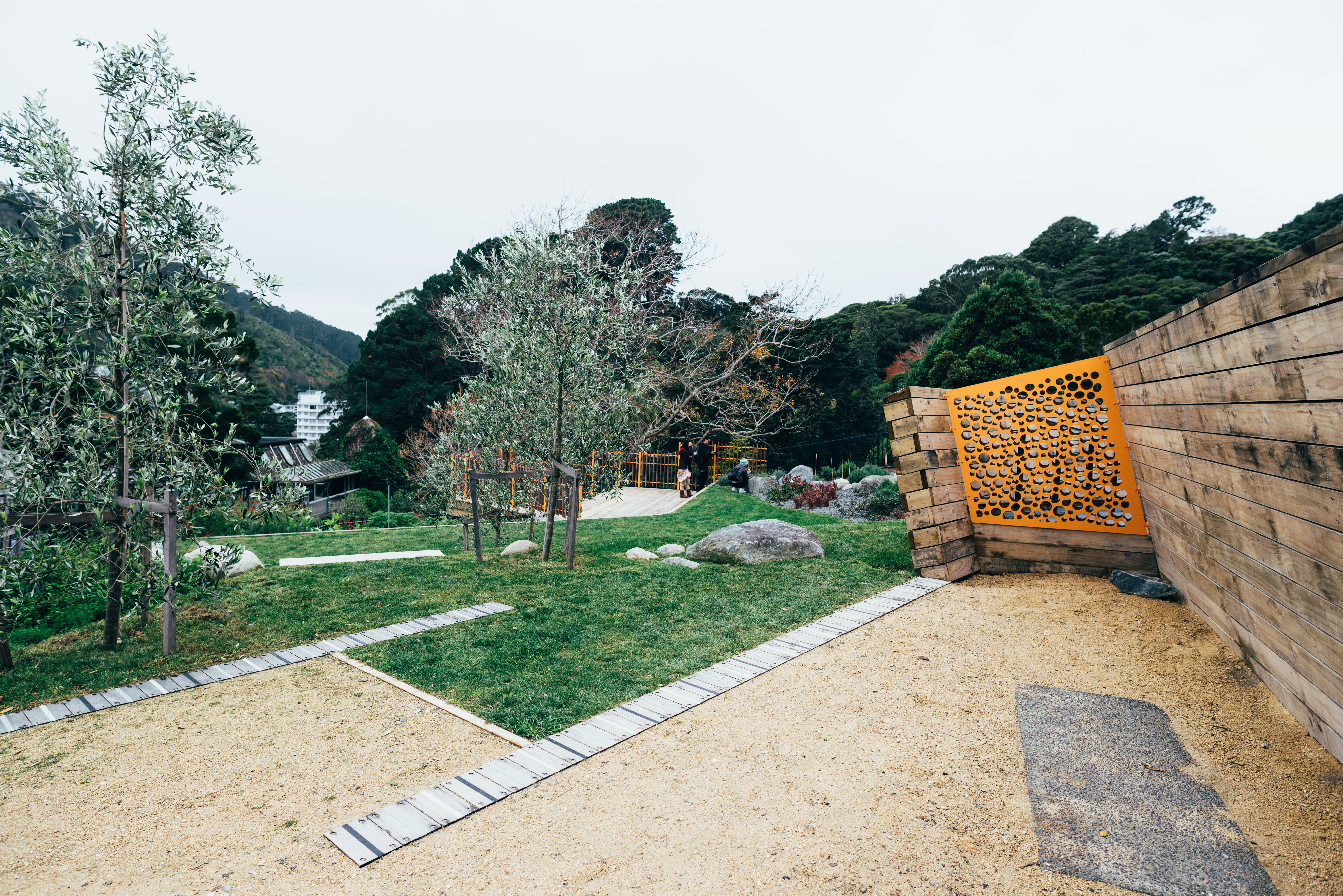
Looking out to olives and medicinal microclimates
Photography: David St George
While the final phase of the Discovery Garden is yet to be completed, the design has transformed a little used area of the botanic garden to a vital activity centre for children and their families to learn more about the natural world and their community. The next stages are, to build a lookout and trails through the pōhutukawa grove, this will add to the discovery and a range of experiences for school groups and everyday visitors alike.
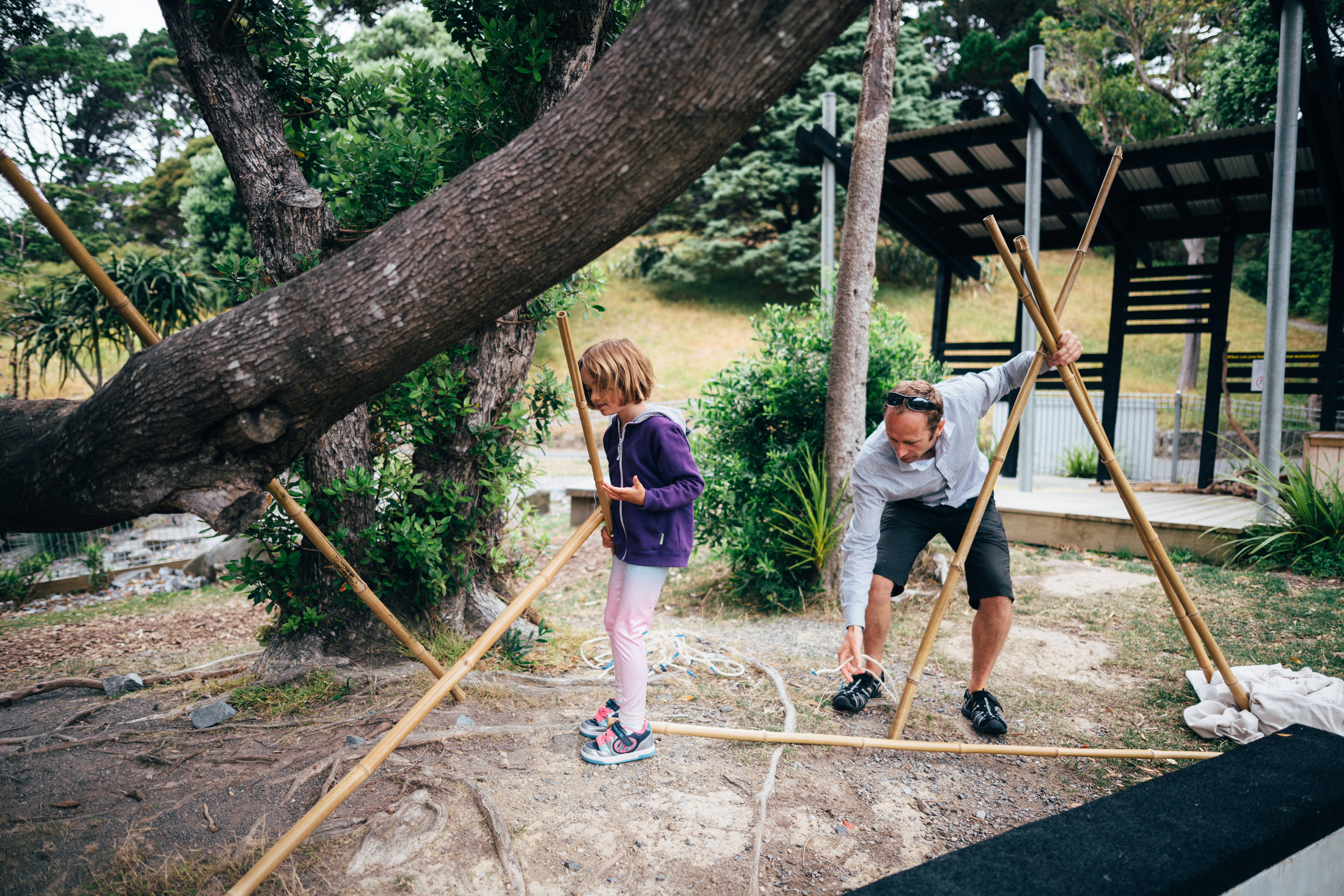
Construction Hut area
Photography: David St George








